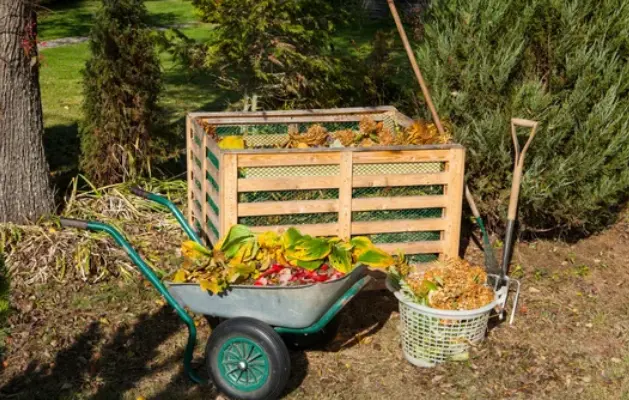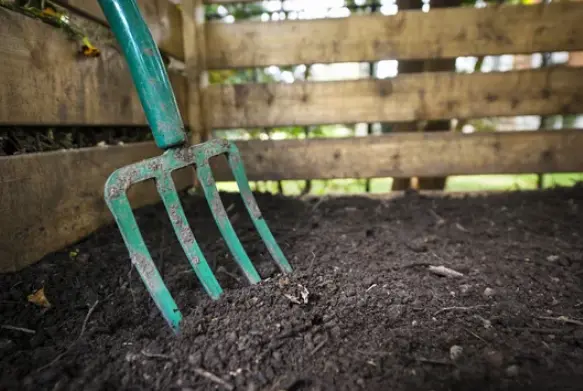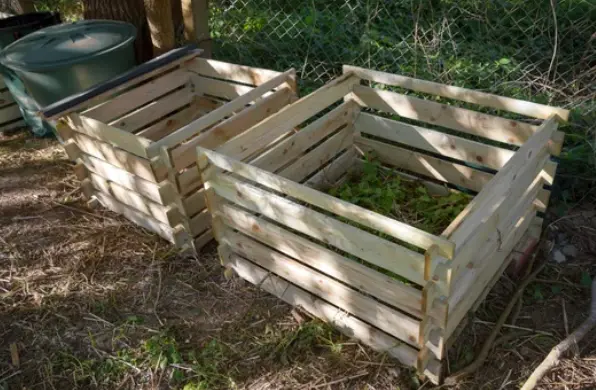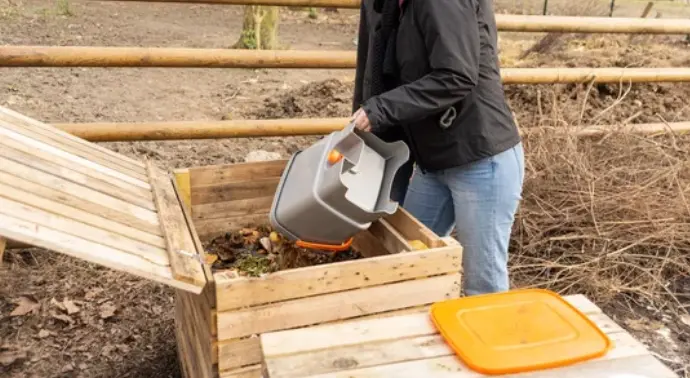How do you find the right wood for your compost bin?
Composting is an important part of organic gardening. It is a way for us to turn our kitchen scraps into useful, nutrient-rich compost that we can use in our gardens.
However, some people use the wrong types of wood when they are making their compost bins. This leads to rot and leaks, and the bin only lasts for a short time.
So we are going to highlight some of the best wood for your compost bin based on our experience using different types of wood.
Wooden compost bins are often seen as the best option because they are durable, easy to maintain, and look attractive in any garden.
They also have a natural appearance, which many people find appealing.
However, not all woods are suitable for compost bins, and it is important to choose the right type of wood for your needs.
How Do You Find the Right Wood for Your Compost Bin?

Composting can be done with a variety of different types of wood, including pine, cedar, redwood, and oak, but each type has its unique properties that make it more or less suitable as a compost bin material.
Pine: This type of wood makes an excellent choice if you want a compost bin that will keep odors in. Pine is not as dense as other types of wood and will also leave behind some air pockets, which makes it easier for oxygen to get into the pile.
Cedar: This type of wood is a good choice if you want a bin that can be used outside since it repels water better than most other woods, but unlike pine, cedar doesn’t absorb odors.
Redwood: This durable wood is often used for outdoor furniture, and it also lasts a long time, but that durability comes with a cost. It’s more expensive than cedar.
Why Are Certain Types of Wood Ideal for Building a Compost Bin?
The reason why wood is better for a compost bin is that it’s a natural product, which means that it is biodegradable and recyclable. It has also been used for centuries to build compost bins with good results.
Also, wood can be a great material for building compost bins because it can withstand pressure, is durable and easy to work with, and doesn’t rot or decay as other materials do. Compost is a great fertilizer, so the more compost bins you build, the better!
What is a compost bin for?

A composting bin breaks down organic matter and produces rich soil that is perfect for fertilizing plants.
In addition, compost bins are a sustainable way of dealing with food scraps and other organic waste.
By composting, the carbon in food scraps is ingested into the soil, where it can eventually be released back into the air as plant-available carbon.
Through the process of respiration In the agricultural industry, carbon sequestration can be achieved through flood irrigation and its use to increase the organic matter in the soil.
The increased organic content in the soil would make it more difficult for plant-available carbon to be released back into the atmosphere through soil respiration, which would reduce carbon dioxide emissions.
However, this practice comes with several risks, and in semi-arid regions, irrigation increases the risk of salinity intrusion because the uptake of salts by plants is not limited by soil water availability.
Salts may also be delivered directly to surface or groundwater sources if pumping is used. Irrigation has been shown to increase erosion due to sediment delivery.
Homemade Wooden Compost Bin Ideal Size

The size of the bin depends on how much compost material you want to store in it at any given time.
I recommend building a rectangular or square-shaped bin with an opening on one side that is large enough for you to easily access the contents of the bin.
It is best to have it in an area that receives full sun, and it should be placed near the house so that it can be easily accessed.
Buying Guides for Different Types of Woods and How They’re Used
A compost bin is an outdoor container where organic waste can be placed to be broken down by bacteria.
It’s also a great way to recycle food scraps and other uneaten food. This article will focus on the different types of wood and how they’re used.
Woods that are good for building compost bins include cedar, redwood, and pine.
They are all very resistant to rot and insects, which makes them perfect for outdoor projects like this one.
Which one is best for building a compost bin?
Cedar, redwood, and pinewood are all great woods for building compost bins.
However, cedar is the most expensive of the three but also has the most longevity.
By adding cedar chips, you will also increase your bin’s lifespan.
Cedarwood does not have to be treated before being used in composting projects, so that means there is less chance of harmful chemicals being used.
Cedar chips are also good at fighting microbes and preventing the compost from smelling bad.
Cedar has been shown to be more resistant to rot than redwood and can last up to 20 years in the right conditions.
Redwood is also fairly resistant, but not as much as cedar, so it might only last 10–15 years before needing replacing.
They are typically fully covered, or at least partially covered, on all four sides with a piece of plywood.
This is done to prevent the buildup of moisture and reduce the chances of rain getting inside the bin.
The bin is also typically made from 1-inch-thick material to allow for good airflow within the composting area, which in turn improves decomposition rates
Woods That is Not Suitable For Building A Compost Bin
Woods that are not suitable for building a compost bin:
1. Redwood
2. Pine
3. Spruce
4. Poplar
5. Hemlock7.
6. Douglas Fir
7. Cypress
8. Ash
9. Eucalyptus
Choosing the Right Type of Wood Before You Build A Compost Bin
Choosing the right type of wood for your compost bin is essential to its success.
You need to know what kind of wood will work best with the type of compost you are making and how much time you want it to take.
Wooden compost bins can be made out of a variety of types of wood, but cedar and redwood are the most popular types because they resist rot and decay, which can be problematic for other types of wood.
Cedar and redwood are also stable and will not warp, shrink, or crack when exposed to moisture.
Forced air compost tumblers may be used in the home garden or apartment yard to speed up the decomposition of materials into compost by turning them on daily and allowing them to blow dry throughout the day so that they do not become moist.
These units are popular because they take less time to use and maintain than the traditional compost pile.
If you have a horse, you may use an automatic feeder designed for horses that dispenses hay, grain, or other types of food.


